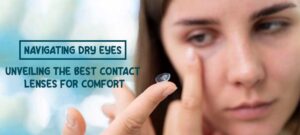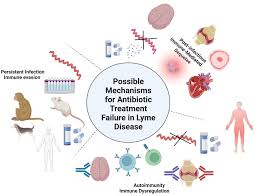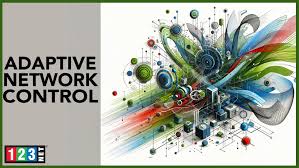Finding the Best Contacts for Dry Eyes Comfort and Relief Options

Introduction
Contact lenses offer a convenient alternative to glasses for over 45 million people in the United States. However, for those with dry eyes, finding the right type of contact lens is crucial for maintaining comfort and eye health. While soft contact lenses are commonly recommended, some individuals may benefit more from specialized options like scleral lenses. This article explores how contacts can lead to dry eyes, what types of lenses are best for managing this condition, and strategies to alleviate symptoms.
Understanding Dry Eyes and Contacts
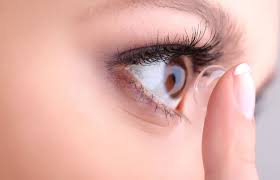
Dry eyes affect approximately 16 million people in the U.S., according to the National Eye Institute (NEI). This condition occurs when the tear film—the protective layer of tears on the surface of the eye—is compromised. The tear film has three layers: the outer lipid layer, the middle aqueous layer, and the inner mucin layer. Each layer plays a critical role in keeping the eyes lubricated, protected from irritants, and healthy.
Wearing contact lenses can disrupt this delicate balance. Research suggests that contacts may interfere with the tear film by:
- Separating the Lipid and Aqueous Layers: Contacts can disrupt the distribution of the tear film layers, affecting stability and thickness.
- Increasing Friction: Contacts can create additional friction against the eye, contributing to dryness.
- Affecting Protein Regulation: Contacts may alter the proteins responsible for eye lubrication, leading to dryness.
Types of Contact Lenses for Dry Eyes
When choosing contact lenses to manage dry eyes, consider the following options:
-
Soft Contact Lenses
- Hydrogel Lenses: Made from flexible plastic that allows oxygen to pass through, these lenses contain water and help keep the eye lubricated. Soft lenses are generally recommended for individuals with dry eyes due to their comfort and moisture-retaining properties.
- Silicone Hydrogel Lenses: These lenses offer higher oxygen permeability and are available in both daily disposable and extended wear options. They are less likely to cause discomfort from dryness compared to traditional hydrogel lenses.
-
Scleral Lenses
- Scleral lenses are larger than traditional contact lenses and sit on the white part of the eye rather than directly on the cornea. They create a reservoir of tears between the lens and the cornea, which can provide significant relief from dry eyes. Scleral lenses are often recommended when other types of lenses are not effective.
Disposable vs. Reusable Contact Lenses
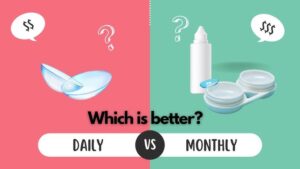
Choosing between disposable and reusable lenses can also impact comfort for those with dry eyes:
- Disposable Lenses: Single-use or daily disposable lenses are less likely to accumulate protein deposits and other debris, which can reduce irritation and dryness. These lenses are generally preferred for individuals with dry eyes.
- Reusable Lenses: While often made from materials with lower water content, reusable lenses may require diligent cleaning and maintenance to prevent dryness and discomfort. Silicone hydrogel reusable lenses offer a balance between comfort and durability.
Managing Dry Eyes with Contacts
To manage and alleviate dry eyes associated with contact lens wear, consider these strategies:
- Natural Remedies: Use a humidifier, apply warm compresses, limit screen time, and stay hydrated to support overall eye health.
- Protective Measures: Wear wraparound sunglasses to shield your eyes from wind and environmental irritants.
- Eye Drops: Over-the-counter or prescription eye drops (artificial tears) can provide additional moisture and relief.
- Medical Interventions: In more severe cases, a healthcare professional may recommend tear duct plugs or surgical options to retain moisture.
Consultation with a Healthcare Professional
Finding the best contact lenses for dry eyes requires personalized advice from a healthcare professional. They can help determine whether soft lenses, scleral lenses, or another type of contact is most suitable for your specific needs. Additionally, they can offer guidance on proper lens care and maintenance to minimize dryness and discomfort.

